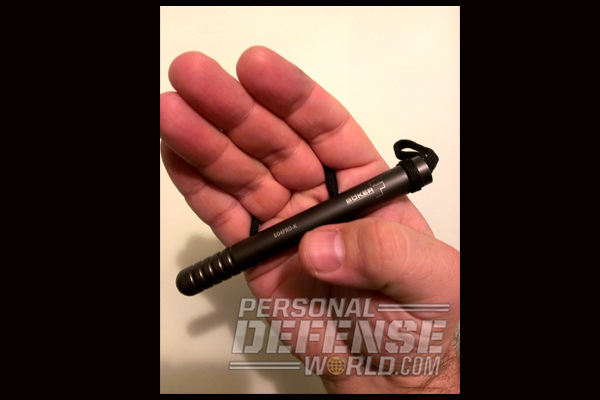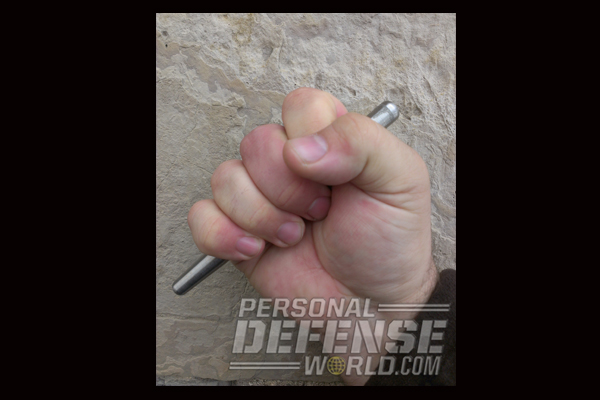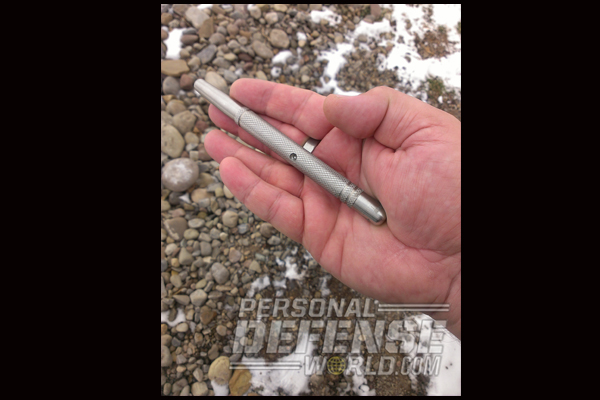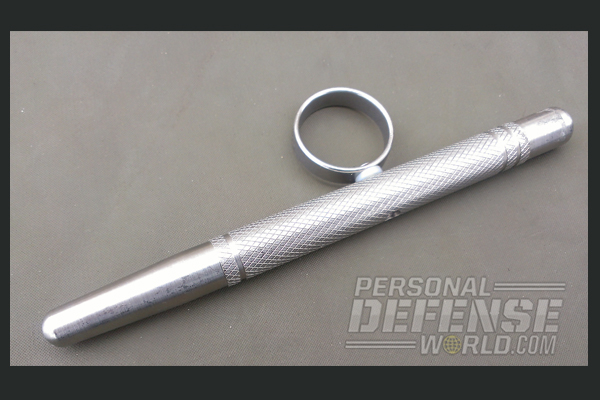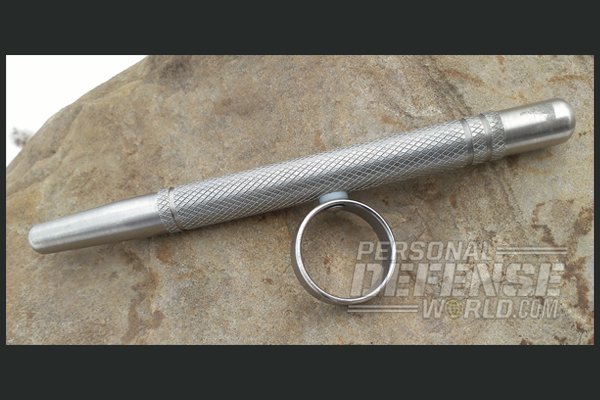Previous Tactical Alley columns have extolled the virtues of the yawara or pocket stick, a simple dowel of wood or metal that is 5 to 6 inches in length. Held in the hand and used to strike in a hammer-fist grip, or held for point control and used for thrusting, such a tool is a remarkably effective weapon at close quarters. It does not feel pain; it breaks less easily than the bones of the user’s hands; and it concentrates the force of any blow into a smaller area, increasing that blow’s effectiveness. Given its small size, light weight and ease of concealment, the pocket stick is therefore an ideal handheld force multiplier for self-defense…except for the “handheld” part. There are those who dismiss the pocket stick as an option because the hand devoted to holding that weapon can’t do much else.
“If a pocket stick is useful and a hands-free pocket stick is more useful, it seems logical that a pocket stick that can be retained but manipulated would be even more useful still.”
“If a pocket stick is useful and a hands-free pocket stick is more useful, it seems logical that a pocket stick that can be retained but manipulated would be even more useful still.”
If the problem is that a pocket stick held in the hand can’t be retained when the hand is open, the solution is to find some means of affixing the weapon to the fingers. One such solution is the koppo stick, a pocket stick to which a flexible cord loop has been added. These, like the yawara, have been around for ages. Modern examples are not plentiful, but they do exist: knife manufacturer Boker offers one called the SO4PRO-K. Available in steel and titanium, it features both a koppo-style finger loop and an end loop to which a keyring can be affixed.
Advertisement — Continue Reading Below
BOKER SO4PRO-K:
The SO4PRO-K is 5.25 inches long and 0.5 inches in diameter. The finger loop (which is what makes a koppo stick a koppo and not a yawara—the ability to loop the stick through your middle and ring fingers so you can open your hand while retaining the weapon) can be manually resized. It’s a simple length of paracord with melted knots at the end; the knots nestle in their machined holes. The keyring loop is also a length of paracord, but this has been gutted so it will lay flat. The advantage of the koppo over the yawara should be obvious. With the retaining loop properly tightened, the user’s hand can open to grab and grasp, making it possible to grapple with the assailant or pick up some other tool while the koppo stick stays attached above the palm. The only liability is that the stick then provides a point of leverage against the fingers to which it is tied, but it’s unlikely that an opponent could grab the stick or otherwise take advantage of this.
SAKURA MARTIAL ARTS:
If a pocket stick is useful and a hands-free pocket stick is more useful, it seems logical that a pocket stick that can be retained but manipulated would be even more useful still. This can be found in the ancient Japanese weapon that is the suntetsu. This is a pocket stick (or, in some formats, a long, piercing rod with spikes at either end) to which a rotating finger ring is attached. The suntetsu is worn like a ring, typically on the middle finger, but the practitioner can spin the rod part of the tool in the palm of the hand. This permits reorienting the weapon. According to Sakura Martial Arts, the supplier for the handmade, USA-crafted suntetsu, the weapon was part of the kakushi buki jutsu, the concealed weaponry tactics of the samurai. Sakura’s 6-inch suntetsu offers good attention to fit and finish, as well as extensive knurling for a sure grip. It’s also quite heavy, facilitating powerful, decisive strikes. Used alone or in pairs, the suntetsu is obviously (like the koppo) a “hands-free” pocket stick. The site describes it as useful for “stabbing, poking, pinching, striking, smashing, scraping and throwing.” What makes the suntetsu most useful is that it can be spun to point forward, rotated to hide behind the fingers (if its length permits) and oriented across the palm for more traditional hammer-fist-type striking. A technique common to all hands-free pocket sticks is that they can be used to reinforce an open-hand slap, bringing the length of the weapon against the target. There is a caveat appropriate to the suntetsu that cannot be overlooked: The finger ring represents a greater liability than the cord loop on a koppo stick. This is because the middle finger, by itself, can more easily be jammed or bent if the user makes a mistake. Proper training and practice with the weapon can mitigate this issue.
Advertisement — Continue Reading Below
MODERN APPLICATIONS:
Especially in “non-permissive environments,” those locales where other weaponry like firearms and knives are forbidden to carry, pocket sticks offer a blunt-force alternative in a force multiplier that may be legal. This will vary from place to place, but these are simple tools that can be built or improvised from a variety of materials. A well-made, machined suntetsu is a powerful, handheld implement of self-defense that is also more versatile than some of its pocket stick counterparts.
For more information on the Suntetsu Pocket Stick, visit: sakuramartialarts.com
For more information on the BOKER SO4PRO-K, visit http://www.boker.de
Advertisement — Continue Reading Below


